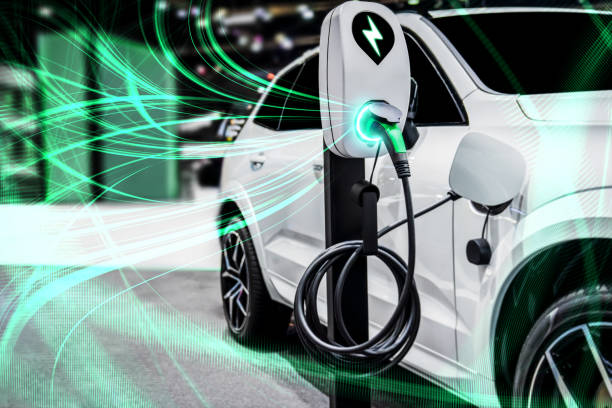Electric cars offer a promising solution to the environmental and economic challenges facing the automotive industry. With increasing concerns over climate change, air pollution, and dependence on fossil fuels, more consumers are turning to electric cars as a cleaner, sustainable alternative.
Despite some initial barriers to adoption, innovations in battery technology, charging infrastructure, and autonomous driving features have made electric cars more efficient, affordable, and practical than ever before. In this blog, we will explore the rise of electric cars and the innovations and challenges associated with them.
I. Innovations in Electric Cars:
- In recent years, electric cars have seen significant advancements in technology. One of the most important developments has been in battery technology. Lithium-ion batteries, which are used in most electric cars today, have improved in terms of energy density, efficiency, and cost.
- This has allowed for longer ranges and faster charging times, making electric cars more practical for everyday use. Additionally, companies like Tesla are working on developing solid-state batteries, which offer even higher energy density and safety.
- In addition to improvements in battery technology, innovations in charging infrastructure have made owning an electric car more convenient. The installation of public charging stations has expanded significantly, making it easier for drivers to recharge their vehicles while on the go. Moreover, wireless charging systems are being developed that allow cars to charge while parked or driving on specific roads.
- Another innovation in electric cars is the integration of AI and autonomous driving features. Electric cars require sophisticated technology to manage power consumption, battery life, and range. Autonomous driving features, such as Tesla’s Autopilot system, use cameras, sensors, and machine learning algorithms to assist drivers with tasks like parking and lane changing. These features not only make driving safer and more efficient but also provide a unique experience for the driver.
II. Benefits of Electric Cars:
- The adoption of electric cars offers several benefits to individuals, businesses, and society as a whole. One of the most significant advantages is environmental. Electric cars produce zero emissions, reducing air pollution and greenhouse gas emissions. They also reduce noise pollution, as they are much quieter than traditional combustion engines.
- Electric cars also offer significant cost savings over traditional gas-powered cars. While the initial cost may be higher, electric cars save money in the long run because of lower fuel and maintenance costs. Additionally, electric cars offer potential grid stabilization benefits through vehicle-to-grid (V2G) technology. This allows electric cars to store excess energy from renewable sources and return it to the grid when needed, reducing strain on the electrical system.
III. Challenges for the Automotive Industry:
- Despite the many benefits of electric cars, there are still challenges that must be addressed before widespread adoption can occur. One of the primary challenges is high initial costs. Electric cars are generally more expensive than gas-powered cars, largely due to the cost of battery technology. While prices are expected to decrease as technology improves and production scales up, the initial cost can still be a barrier for many consumers.
- Another challenge is the limited availability of charging stations. While the number of public charging stations has grown significantly in recent years, there are still areas where they are scarce or nonexistent. This can lead to range anxiety, which refers to the fear of running out of battery power before reaching a charging station. To address this issue, more investment is needed in charging infrastructure.
- Another challenge is the concern over battery disposal and recycling. Batteries contain toxic materials that can harm the environment if not disposed of properly. There are also concerns about the availability of raw materials and the impact of mining on the environment. Recycling programs and sustainable sourcing practices will be necessary to ensure that electric cars remain an environmentally friendly option.
IV. Government Policies and Incentives:
- To encourage adoption of electric cars, governments have implemented various policies and incentives. Subsidies and tax credits are available in many countries to offset the higher initial costs of electric cars. Additionally, some cities have implemented low-emission zones, where only electric or hybrid cars are allowed.
- Governments have also implemented emission standards and regulations to reduce the environmental impact of vehicles. These standards require automakers to meet specific emissions targets and have resulted in the development of more fuel-efficient and environmentally friendly cars.
V. Electric Cars and the Future:
- As technology continues to improve and consumer demand increases, electric cars are expected to become a larger part of the automotive industry. Predictions indicate that electric cars could account for as much as 50% of new car sales by 2030.
- There are also several technological advancements on the horizon that will continue to improve the performance and efficiency of electric cars. Solid-state batteries, for example, promise higher energy density and faster charging times. Additionally, wireless charging systems and V2G technology offer convenience and potential grid stabilization benefits.
- The rise of electric cars is also likely to have a significant impact on the automotive industry as a whole. Traditional automakers are investing heavily in electric vehicle research and development to keep up with the changing market. New companies, such as Tesla and Rivian, are disrupting the industry and challenging traditional business models.
FAQ
1. Will electric cars rule the future automobile industry?
- The answer can be a yes or no. However, experts predict that electric cars are likely to become a major part of the automobile industry in the future. There are several reasons for this. Firstly, governments around the world are implementing policies and incentives to encourage the adoption of electric cars as a means of reducing carbon emissions and improving air quality.
- Secondly, advancements in technology, such as improvements in battery technology and charging infrastructure, are making electric cars more efficient, affordable, and practical than ever before. Thirdly, consumer demand for environmentally friendly and sustainable transportation options is increasing.
- However, the transition to electric cars will take time and there are still challenges that need to be addressed, such as high initial costs, limited availability of charging infrastructure, and concerns over battery disposal and recycling.
- Additionally, traditional automakers will need to adapt to changing market demands and compete with new companies, like Tesla adding new features to the driving mode, that are leaders in the automotive industry. While it is uncertain exactly how much electric cars will dominate the automotive industry in the future, it is clear that they will play a significant role in meeting the challenges of climate change and environmental sustainability.
2. What is the future of the auto industry?
- The future of the auto industry is expected to be shaped by several key trends and factors. One of the most significant trends is the shift toward electric and autonomous vehicles. As governments around the world implement policies and incentives to encourage the adoption of EVs, automakers are investing heavily in research and development to meet changing market demands.
- Additionally, advancements in battery technology and charging infrastructure are making electric cars more efficient and practical than ever before. Autonomous driving features are also becoming more sophisticated, offering improvements in safety and convenience.
- Another trend that is likely to shape the future of the auto industry is the rise of shared mobility services, such as ride-sharing and car-sharing platforms. These services offer cost savings and convenience to consumers, while also reducing traffic congestion and emissions. Traditional automakers are partnering with these services, or launching their own, to stay competitive in a rapidly changing market.
- In addition to these trends, concerns over climate change and environmental sustainability are driving the need for more sustainable transportation options. This includes not only electric cars but also alternative fuel sources, such as hydrogen fuel cells, and sustainable manufacturing practices.
- Overall, the future of the auto industry is likely to be characterized by a shift toward electric and autonomous vehicles, shared mobility services, and a focus on sustainability. While there are still challenges to be addressed, such as high costs and limited availability of charging infrastructure, the industry is poised for significant innovation and growth in the coming years.
3. What are the challenges of EV in the automotive industry?
A: While electric vehicles (EVs) offer several benefits over traditional gas-powered cars, there are still challenges that must be addressed before they can become more widely adopted. Some of the key challenges of EVs in the automotive industry include:
High initial costs
The cost of electric vehicles is generally higher than traditional gas-powered cars. This is largely due to the high cost of battery technology. While prices are expected to decrease as technology improves and production scales up, the initial cost can still be a barrier for many consumers.
Limited availability of charging infrastructure
One of the biggest challenges for EVs is the limited availability of charging infrastructure. While the number of public charging stations has grown significantly in recent years, there are still areas where they are scarce or nonexistent. This can lead to range anxiety, which refers to the fear of running out of battery power before reaching a charging station.
Range limitations
The range of electric vehicles is another challenge. While range has improved with advancements in battery technology, it still falls short of the range offered by traditional gas-powered cars. This can limit the practicality of electric vehicles for long-distance travel.
Battery disposal and recycling
Batteries contain toxic materials that can harm the environment if not disposed of properly. There are also concerns about the availability of raw materials and the impact of mining on the environment. Recycling programs and sustainable sourcing practices will be necessary to ensure that electric cars remain an environmentally friendly option.
Manufacturing emissions
While EVs produce zero emissions when driven, the manufacturing process produces significant emissions. The production of batteries and other components requires energy and resources that contribute to carbon emissions.
Overall, while electric vehicles offer many advantages over traditional gas-powered cars, there are still challenges that must be addressed to make them more practical and accessible for consumers. Governments, automakers, and other stakeholders are working to address these challenges through policy and innovation, but it will likely take time to fully overcome them.
4. Why are electric cars the future in the auto industry?
- Electric cars are the future in the auto industry because they offer several benefits over traditional gas-powered cars. They produce zero emissions, reducing air pollution and greenhouse gas emissions, and offer cost savings on fuel and maintenance.
- Additionally, advancements in battery technology and charging infrastructure have made them more efficient, affordable, and practical than ever before.
- Governments around the world are also implementing policies and incentives to encourage the adoption of electric cars as a means of reducing carbon emissions and improving air quality.
- This shift toward electric vehicles is expected to continue in the coming years, with predictions indicating that electric cars could account for as much as 50% of new car sales by 2030.
5. What are the challenges faced by current electric vehicle design and technology?
The challenges faced by current electric vehicle design and technology include high initial costs, limited availability of charging infrastructure, range limitations, concerns over battery disposal and recycling, and manufacturing emissions. While electric vehicles offer many advantages over traditional gas-powered cars, these challenges must be addressed to make them more practical and accessible for consumers. Governments, automakers, and other stakeholders are working to address these challenges through policy and innovation, but it will likely take time to fully overcome them.
Conclusion
The rise of electric cars represents a significant shift in the automotive industry. Advancements in battery technology, charging infrastructure, and autonomous driving features have made electric cars more efficient, affordable, and practical than ever before. While there are still challenges to be addressed, government policies and incentives, along with growing consumer demand, are driving the adoption of electric cars. Predictions for the future suggest that electric cars will continue to grow in popularity and become a major part of the automotive industry, impacting traditional automakers and paving the way for new companies and business models.








